Artificial barriers are widespread and abundant in rivers worldwide, contributing to the global decline in freshwater biodiversity. In their latest research, Jones and colleagues aimed to assess potential selective effects of barriers on fish communities to better inform fish passage science.
The impact of large barriers is well documented for large fish like salmon: disrupting well known movements between adult marine habitat and freshwater spawning/juvenile rearing areas. However, river-resident fish also need to move up and downstream in rivers to complete various parts of their lifecycles, and the impacts of small barriers on these species are unclear.
In our study, we made an experimental cascade system to test potential selective effects of small barriers on a range of river-resident fish (topmouth gudgeon, minnow, stone loach, bullhead, and brown trout).
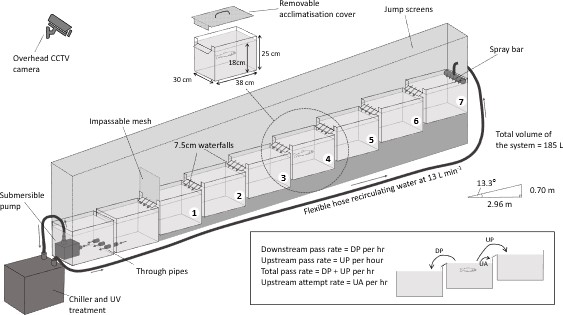
We examined upstream and downstream passage behaviour in the cascade system, which consisted of seven pools separated by small waterfalls (7.5 cm – yes, really small!). We also measured the size, shape, swimming ability, metabolism and behaviour (boldness) of fishes to identify the factors influencing barrier passage success.
Although all species tried to move upstream, only some brown trout succeeded. Our results showed that even very small barriers can have selective effects on fish communities by preventing upstream passage of smaller fishes with lower swimming ability.
To explore this further, we set up a simulation model which indicated that the presence of multiple barriers would result in net downstream movement of all study species. This could be a reason why fish are often rare or absent in river reaches upstream of barriers. Further, benthic species such as stone loach and bullhead were more prone to downstream movement than pelagic species (topmouth gudgeon and European minnow), resulting in shifts in community composition.
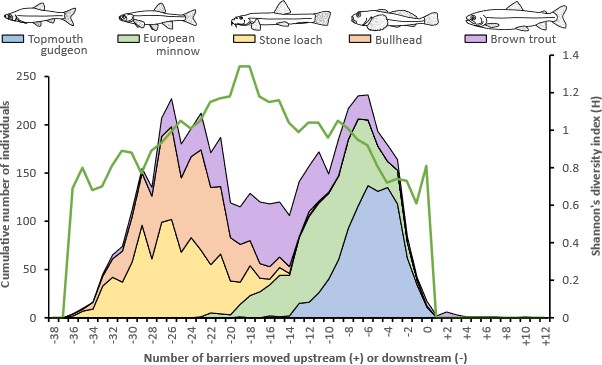
Our results suggested selective effects at the population level. Most brown trout were relatively sedentary while some individuals showed frequent and extensive movements both up and downstream. Importantly, brown trout movement showed significant individual repeatability, indicating that the differences in movement within the cascade reflected the innate behavioural tendency of individual fish.
Larger, bolder brown trout tended to move upstream while those with lower aerobic scope moved downstream. Hence, low-head barriers can cause selective effects on a range of morphological, physiological, and behavioural traits, potentially with maladaptive consequences.
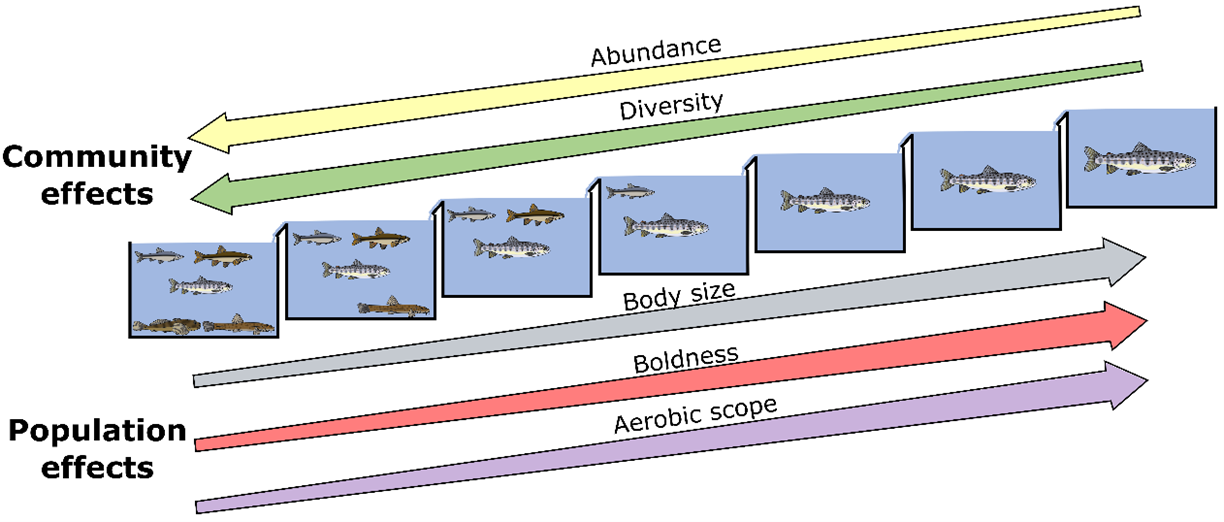
Barrier mitigation measures need to embrace the variation between and within species to avoid inadvertent artificial selection on fish communities. Fish pass designs incorporating minimal height differences and low flow velocities are needed to allow for effective passage of smaller-bodied, weaker-swimming fish.
Options that offer diverse and spatially variable flow conditions, such as nature-like fish passes, are likely to offer better passage to the wider fish community than other options which are often designed for strong swimmers.
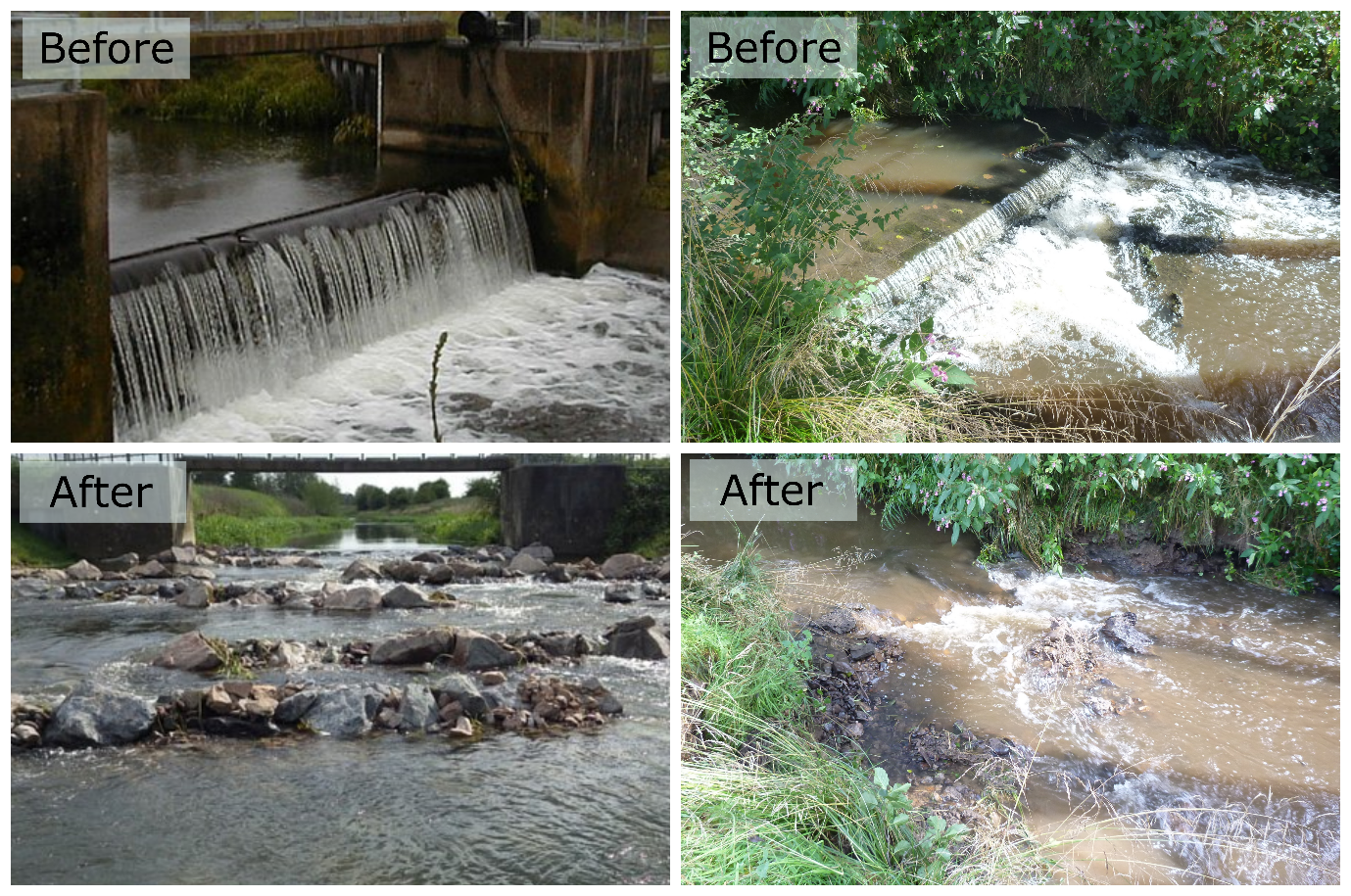
Our findings show the need for barrier removal efforts to focus on low-head barriers as well as larger dams and weirs. Given the high abundance of low-head structures in river systems, a paradigm shift is needed to recognise the more subtle impacts of small barriers on freshwater biodiversity.
Read the full, Open Access paper Selective effects of small barriers on river-resident fish in Journal of Applied Ecology.
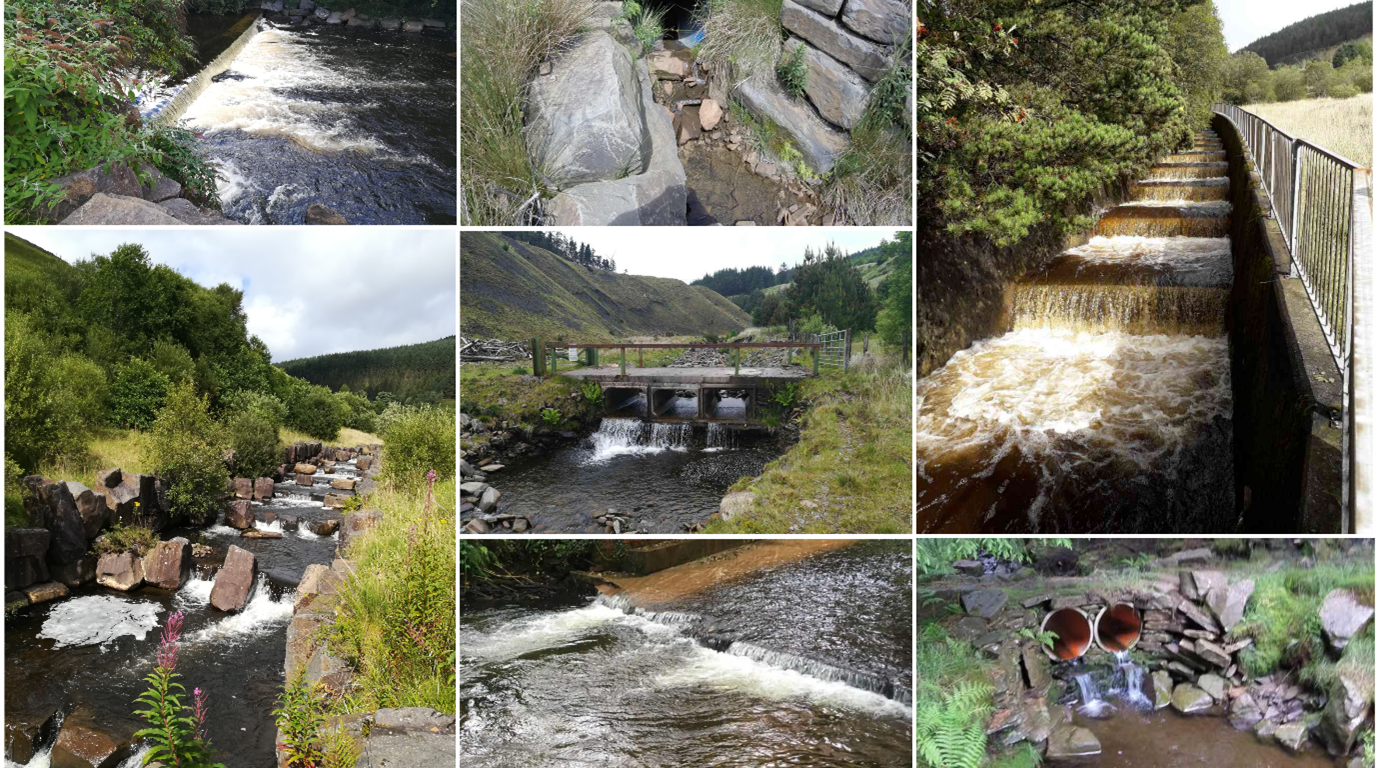
One thought on “Small but damaging: low-head barriers can cause selective effects on river fish communities”